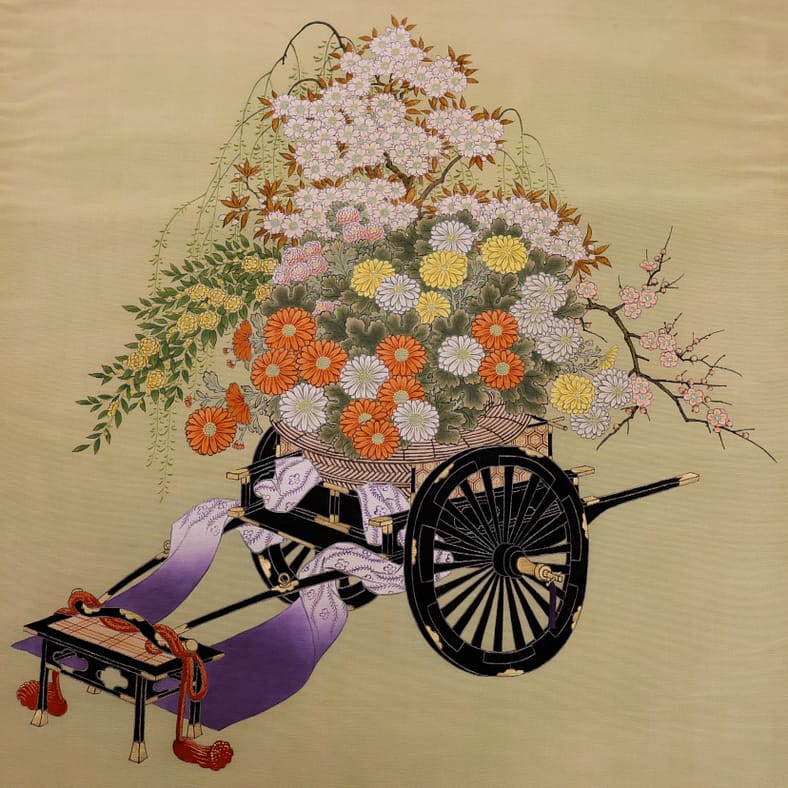
Shakamuni Buddha’s birthday is commemorated on the 8th day of the 4th month. In Japan, this celebration is called Hana Matsuri. Saga Goryu North America Chapter offers an ikebana installation for Hana Matsuri at the Portland Japanese Garden from April 9 through 12. Members and guests who pay admission can enjoy this special display in the Atsuhiko and Ina Goodwin Tateuchi Foundation Courtyard.
The theme of this year’s ikebana installation is yume (夢), or “dream.” However, yume means more than just a dream—it represents hope, transformation, and a shared vision for the future. Just as dreams connect imagination with reality, ikebana brings together tradition, creativity, and the beauty of impermanence. Yume reminds us that this art form is more than an arrangement of flowers; it isa living dream that continues to evolve and inspire.
Ikebana, the Japanese art of flower arranging, has been translated as “living flowers” or “giving life to flowers.” It dates to the sixth century when China and Korea introduced Buddhism to Japan. Floral offerings, known as kuge, were placed on the altar of temples.
Yume – A Living Dream

Yume goes far beyond the simple visions we experience in sleep. It embodies a rich, multi-layered concept of hope, personal growth, and inner discovery. Yume is like a doorway between the visible world and a hidden, imaginative realm, where everyday reality meets mystery and symbolism. In this space, our dreams serve as a mirror for our inner self, revealing insights about who we are and what we might become.
Just as a dream fades upon waking, yume teaches us to embrace impermanence, recognizing that each moment is an opportunity to reimagine and renew. In essence, it is a celebration in recognition of what has been, what is, and what is yet to come. It is a powerful reminder that our dreams, both literal and metaphorical, are the seeds from which transformation and growth blossom.
Yet yume is not just an individual experience—it is also a shared vision, a dream that takes root in communities and flourishes over time. It is the collective aspiration that unites people across generations, nurtured through tradition, creativity, and connection. Like blossoms that return with each season, a dream is both a reflection of the past and a promise for the future.
As we celebrate 85 years of Saga Goryu Ikebana in North America, this arrangement honors the dream that has flourished across generations. Like flowers that bloom and fade yet return with the seasons, yume reminds us that each moment is an opportunity to create, connect, and reimagine what is possible.
The Saga Goryu School of Ikebana
The Saga Goryu School, started by Emperor Saga, founder of Daikakuji Temple in Kyoto, aims to introduce visual and spiritual pleasure into daily life. To do this, the School teaches techniques of floral decoration, and the skills to recognize the delicate beauty of flowers and their artistic value. According to Saga Goryu, ikebana is more than a classical art of ancient origin to be appreciated by an exclusive group of specialists. It is an art form that is still relevant today.